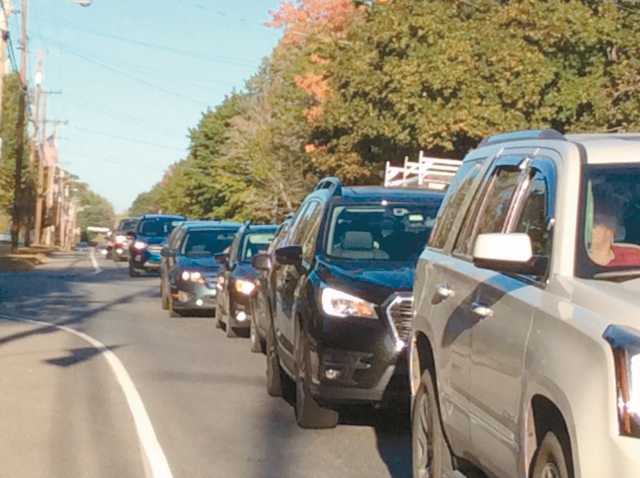“As Gorham grows this becomes more and more frustrating. We love living here and have been here for 20 years, but the daily commute is horrible,” said Stacey Haskell in a recent email to the Gorham Times.
Gorham drivers creeping up Route 114 during rush hour will be waiting at least five years for a turnpike connector to reduce traffic on the popular commuting route. “The Gorham Connector is in the very early stages of planning,” said Andrew McLean, the Gorham state representative who chairs the House Transportation Committee. “Since the Maine Turnpike Authority is the agency charged with its construction, one other significant project remains scheduled in front of the connector.”
“That project,” McLean explained, “is widening the turnpike from exit 44 to exit 52.” This stretch of Interstate 95 runs from the turnpike connection with 295 in Scarborough to the Falmouth connector, a total of 7.30 miles. “The widening will be done in such a way,” he said, “that will make construction of the Gorham Connector easier, aligning the bridges and on-ramps for the eventual connector. That project also includes replacing bridges at the Payne Road exit. McLean emphasized that “even though there is no shovel in the ground, planning is taking place.”


Traffic typically inches along between Route 114 and Route 22 during the morning commute and at the intersection of Route 202 and Route 25 in the late afternoon.
Meanwhile, traffic is tied up every weekday in the morning and late afternoon on the major routes leading in and out of Portland. Residents who used to see a big drop-off after the summer tourist season, now fight traffic all year, particularly on Routes 22, 25, as well as 114.
Population growth in Gorham and traditionally rural towns such as Buxton and Standish has created a situation where as many as 50 additional cars are on the road every morning. This month, McLean is meeting with Maine Department of Transportation (DOT) Commissioner Bruce Van Note to discuss interim measures that could increase traffic flow and reduce delays on these busy routes.
Although turnpike projects take a long time to complete, they are funded by toll revenue, set by the Turnpike Authority Board, and are not dependent on legislative action or voter approved bonds. On the other hand, the Maine DOT, while receiving federal funds, relies largely on bond and tax monies to maintain the state’s roads and bridges. Currently there is a $140 million annual gap between its highway budget and the needs identified by the DOT.
McLean is co-chairing a blue ribbon commission charged with recommending to the Legislature ways to increase funding. The state’s 30 cent gasoline tax, the primary source of funds, has not increased since 2011 although during the same period construction costs have skyrocketed. This past year, the Maine DOT cancelled $59 million in road and bridge projects due to high construction cost. The 15-person commission, made up of a variety of stakeholders, will consider a number of ways to raise infrastructure money. They will hold meetings at three locations in Maine to interact with the public before submitting their report at the end this year.


